I am certainly a pet lover, but I just came to a point that I thought I'd keep something different. There were actually a lot of candidates, most of them were hard (or should i say impossible) for me to acquire. The list had included likes such as komodo dragon, boa constrictor, bengal tiger, kangaroo (I seriously want this one), and vulture to name a few...until i had discovered these wonderful God-made creatures.
Tarantulas, we see them in movies as very evil creatures...something hairy and dreadful that would jump in the face or neck and suck the hell out of them...or bite the poor victim and let them die after a couple of seconds. Never in my life had I imagine being face to face with these creatures, until now.
Keeping them is quite a challenge, but they turn out to be rewarding pets if you take good care of them. So I thought I'd share what I have and had for a time.
The Chilean Rose (Grammostola Rosea) is one of the most docile tarantulas I have. Here in the picture is Jennifer, a sub-adult female. She doesn't like moisture at all so I gave her a dry substrate with a deep waterdish for her water needs. Currently she is about 5inches DLS (diagonal leg span, for those unfamiliar).
The Brazilian Fire Red (Lasiodora Difficilis) is one big guy. Steve here has quite a good appetite, and likes to stay on top of his clay pot hide. As a sub adult male, he monstrously measures 6.5inches DLS, and to date, is my biggest tarantula, and yes he is still growing.
The Asian Fawn Bird-eater (Chilobrachys Huahini) is a very defensive species. Lori is a sub-adult female, and she was my first tarantula. I manage to redecorate her enclosure while she was inside, because she doesn't like to move a lot. I have read that their kind were opportunistic arboreals (meaning they may settle on treetops and barks or they may end up burrowing). Lori decided to be a burrower and likes to hide in her web-made tunnel. She's about 5.5inches DLS.
The Indian Ornamental Tree Spider (Poecilotheria Regalis) is the most common arboreals. Stanley is a mature male tree spider and measures around 5.5inches DLS. He was always the one to get me nervous, for he moves very fast and has a good appetite. And he hates worms. Poecilotheria species were known to have the most potent venom in the tarantula world.
The King Baboon Tarantula (Citharischius Crawshayi), one of the most sought after species in the tarantula world is really a gem. I can't name him/her yet because I ain't sure of it's gender, but mine would probably be a female. For a long time it hasn't molted ever since I got this as a gift, and that would only prove it can live very long. She made a very very cool tunnel, something like a cave or labyrinth comes out at night just to wander over her territory.
This one is not a tarantula, but a centipede (Scolopendra Morsitans), not to be mistaken with the Arizona Tiger Centipede. I got this guy crawling in our sink so i decided to keep him. He just molted this afternoon, and maybe he grew a few centimeters. He never refuses a meal and is quite fast.
Here are some of the tarantulas I had and had to let go for some reasons.
Trey, Brazilian red tarantula (Nhandu Carapoensis). Hope he makes it to create lots of mini-Trey's.
Jeff, Mexican Fireleg (Brachypelma Boehmi). This one's a crazy brachy. He prefers to bite rather than flick.
Carrie, Honduran Curly Hair (Brachypelma Albopilosum). She was formerly named Kerry until I discovered he was a she and felt the need to change her name.
Greg, White Stripped Birdeater (Nhandu Chromatus). He died in a mating project. But good news! The female he mated with is possibly gravid. Hope he'd make a lot of little Greg's.
Tony, Cobalt Blue tarantula (Haplopelma Lividum). He also died in a mating project. Still waiting for updates.
The babies will have their turn when their mature colors appear.

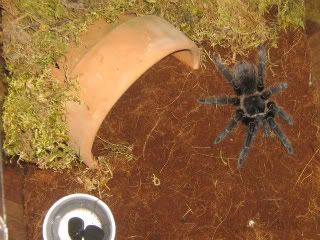
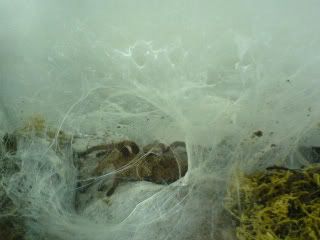
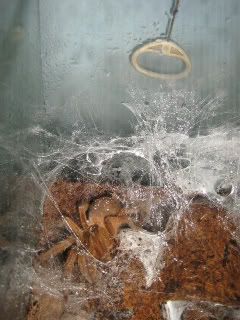
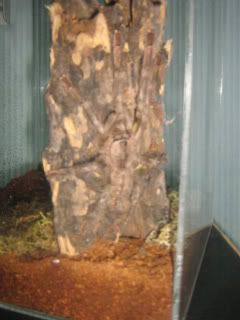

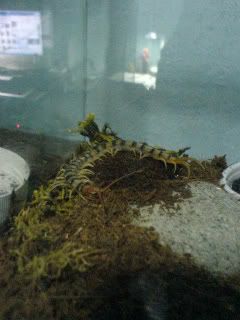


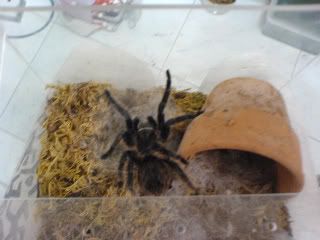
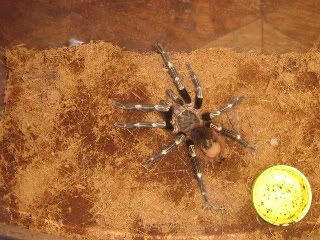
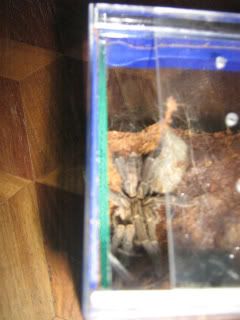

No comments:
Post a Comment